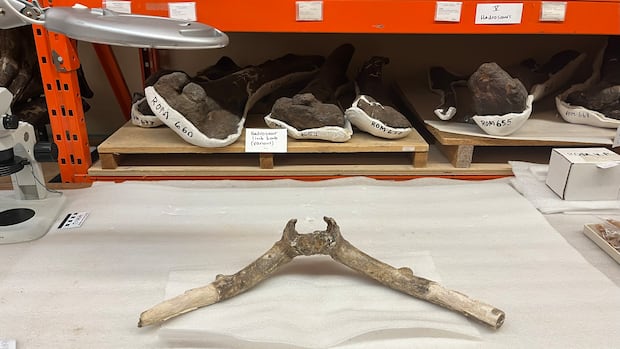
"A study by Trent University, in partnership with the Royal Ontario Museum and the Royal Alberta Museum, has found a link between the fossil and two deer species found across North America. The more analysis we did, it became clear it was most closely related to whitetail and mule deer, but likely a distinct species that diverged around 3,000,000 years ago,"
"The fossil, dubbed by scientists as Torontoceros hypogaeus or horned Toronto deer from underground, is believed to be one of a kind and almost 12,000 years old. And it's helping to provide a snapshot into what life looked like back then. It looks like it was adapted for a wider, more open space than the forested area you would have seen in the past few hundred years, said Oliver Haddrath, a collections technician at the Royal Ontario Museum."
"The wide antlers initially led scientists to believe it was a species of caribou. (Sherri Owen) Moving forward, Schafer said researchers would like to better understand what led to the species' extinction. We know climate was involved, and maybe it was a very small population that started to accumulate a lot of bad things in its DNA and couldn't adapt,"
Trent University and two provincial museums linked a nearly 12,000-year-old fossil from Islington subway construction to white-tailed and mule deer while identifying it as a distinct species that diverged about three million years ago. The fossil, named Torontoceros hypogaeus, exhibits wide antlers and anatomical traits consistent with adaptation to open, tundra-like environments rather than forest. Initial morphology suggested caribou affinities, but ancient DNA clarified relationships. Extinction drivers likely include climate change and genetic problems from a small population. New ancient DNA laboratory capabilities enabled analysis and placement of the specimen in a deer family tree.
Read at www.cbc.ca
Unable to calculate read time
Collection
[
|
...
]